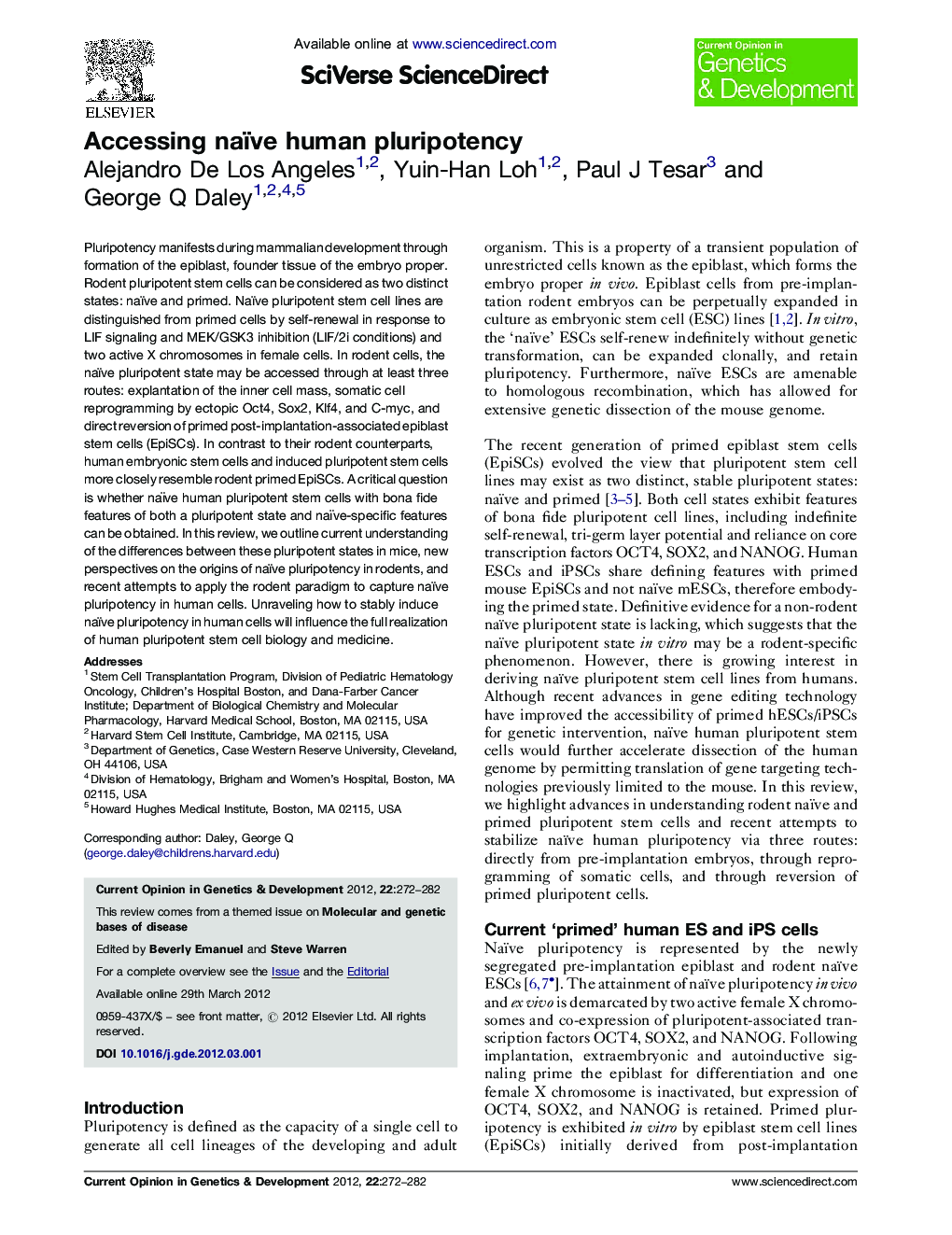| Article ID | Journal | Published Year | Pages | File Type |
|---|---|---|---|---|
| 5893433 | Current Opinion in Genetics & Development | 2012 | 11 Pages |
Abstract
Pluripotency manifests during mammalian development through formation of the epiblast, founder tissue of the embryo proper. Rodent pluripotent stem cells can be considered as two distinct states: naïve and primed. Naïve pluripotent stem cell lines are distinguished from primed cells by self-renewal in response to LIF signaling and MEK/GSK3 inhibition (LIF/2i conditions) and two active X chromosomes in female cells. In rodent cells, the naïve pluripotent state may be accessed through at least three routes: explantation of the inner cell mass, somatic cell reprogramming by ectopic Oct4, Sox2, Klf4, and C-myc, and direct reversion of primed post-implantation-associated epiblast stem cells (EpiSCs). In contrast to their rodent counterparts, human embryonic stem cells and induced pluripotent stem cells more closely resemble rodent primed EpiSCs. A critical question is whether naïve human pluripotent stem cells with bona fide features of both a pluripotent state and naïve-specific features can be obtained. In this review, we outline current understanding of the differences between these pluripotent states in mice, new perspectives on the origins of naïve pluripotency in rodents, and recent attempts to apply the rodent paradigm to capture naïve pluripotency in human cells. Unraveling how to stably induce naïve pluripotency in human cells will influence the full realization of human pluripotent stem cell biology and medicine.
Related Topics
Life Sciences
Biochemistry, Genetics and Molecular Biology
Developmental Biology
Authors
Alejandro De Los Angeles, Yuin-Han Loh, Paul J Tesar, George Q Daley,
